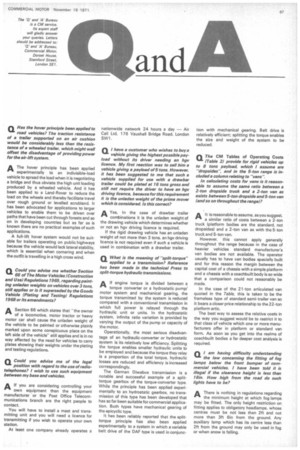Q The CM Tables of Operating Costs
Page 65

If you've noticed an error in this article please click here to report it so we can fix it.
(Table 2) provide for rigid vehicles up to 8 tons payload, which I assume are "dropsides", and in the 5-ton range is included a column relating to "vans".
In calculating costs for vans is it reasonable to assume the same ratio between a 2-ton dropside truck and a 2-ton van as exists between 5-ton dropside and 5-ton van (and so on throughout the range)?
A it is reasonable to assume. as you suggest, ir-lk a similar ratio of costs between a 2-ton truck (platform bodies are the standard, not dropsides) and a 2-ton van as with the 5-ton truck and 5-ton van.
However, this cannot apply generally throughout the range because in the case of heavier vehicles standard manufacturer's van bodies are not available. The operator usually has to have van bodies specially built and for this reason the margin between the capital cost of a chassis with a simple platform and a chassis with a coachbuilt body is so wide that a comparison could not reasonably be made.
In the case of the 21-ton articulated van quoted in the Table, this is taken to be the frameless type of standard semi-trailer van so it bears a closer price relationship to the 22-ton platform artic.
The best way to assess the relative costs in the way you suggest would be to restrict it to that class of vehicle which one or more manufacturers offer in platform or standard van form. As soon as you get into the realms of coachbuilt bodies a far deeper cost analysis is required.




















































































































